Table of Contents
Come join us now, and enjoy playing your beloved music and browse through great scores of every level and styles!
Can’t find the songbook you’re looking for? Please, email us at: sheetmusiclibrarypdf@gmail.com We’d like to help you!
Sorabji: In the Hothouse (from Two Piano Pieces) sheet music, Noten, partitura, spartiti 楽譜

Best Sheet Music download from our Library.

Please, subscribe to our Library.
If you are already a subscriber, please, check our NEW SCORES’ page every month for new sheet music. THANK YOU!
Browse in the Library:
Or browse in the categories menus & download the Library Catalog PDF:
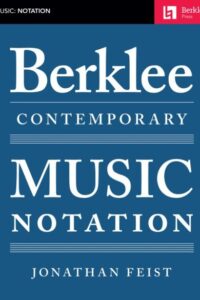
Who was Sorabji?
Kaikhosru Shapurji Sorabji: The Hermit of Modernist Maximalism
In the often-crowded pantheon of 20th-century composers, Kaikhosru Shapurji Sorabji (1892-1988) occupies a unique and enigmatic niche. A composer of staggering ambition, labyrinthine complexity, and self-imposed isolation, Sorabji crafted some of the most monumental, technically demanding, and stylistically idiosyncratic music ever conceived. His work, largely ignored during his lifetime and still challenging audiences today, represents a singular path through modernism – one defined by maximalism, intricate ornamentation, transcendental virtuosity, and a fierce, almost hermetic, independence.

Biography: A Self-Forged Identity
- Birth & Heritage: Born Leon Dudley Sorabji on August 14, 1892, in Chingford, Essex, England. His father was a Parsi engineer from India (thus the Persian-derived name Sorabji), and his mother was English-Spanish. This mixed heritage profoundly shaped his sense of identity, though he felt alienated from both cultures.
- The Name: Around 1914, he legally changed his name to Kaikhosru Shapurji Sorabji. “Kaikhosru” and “Shapurji” were Persian names chosen for their resonance and connection to ancient Persian history and Zoroastrianism, reflecting his deliberate construction of a unique persona.
- Musical Formation: Largely self-taught. He received some piano lessons in his youth but had no formal composition training. His musical education came through voracious listening, score study (especially Bach, Liszt, Busoni, Debussy, Ravel, Scriabin, Szymanowski, Medtner), and wide reading in literature, philosophy, and the occult.
- Early Career & Criticism: Worked as a music critic (under the pseudonym “S. Godfrey”) for outlets like The New Age and The New English Weekly from the 1910s to the 1930s. His critiques were famously acerbic, insightful, and often scathing, particularly targeting English musical provincialism and composers he deemed mediocre (which was most of them).
- The Recluse: Deeply disillusioned by the musical establishment and critical reception to his early performances (which were rare and often controversial), Sorabji gradually withdrew from public musical life starting in the late 1930s. After his mother’s death in 1940, he retreated almost completely to his secluded home “The Eye” in Corfe Castle, Dorset, where he lived with his companion, Reginald Norman Best, until his death. He forbade performances of his music for decades.
- The Ban Lifted: In 1976, pressured by a growing underground interest spearheaded by pianists like Yonty Solomon and Alistair Hinton (who later became his literary executor), Sorabji reluctantly lifted the ban on performances, provided he approved the performer.
- Death: Sorabji died on October 15, 1988, in Winfrith Newburgh, Dorset, leaving behind a colossal legacy of unpublished manuscripts.
Works: Monuments of Sound

Sorabji’s output is vast and overwhelmingly dominated by solo piano music, though he also composed orchestral works, chamber music, organ symphonies, and songs. His works are renowned for their extreme length, density, and technical difficulty, pushing the boundaries of playability.
- Key Masterpieces:
- Opus Clavicembalisticum (1930): His most famous (or infamous) work. A colossal 4+ hour piano epic in 12 movements (including fugues, passacaglias, toccatas, cadenzas), often considered one of the most challenging solo piano works ever written. A summit of contrapuntal complexity and virtuosic display.
- Symphonic Variations for Piano (1935-37): Another monumental work, exploring vast variation forms over an extended duration.
- Sequentia Cyclica super “Dies iræ” ex Missa pro Defunctis (1948-49): A massive cycle of 27 variations on the “Dies Irae” chant, demonstrating his intricate contrapuntal and transformative skills.
- 100 Transcendental Studies (1940-44): True to their name, these studies explore extreme technical and expressive demands far beyond those of Liszt or Chopin.
- Symphonies for Solo Piano: Several exist, including his Symphony No. 2 (“Jāmī”), blending orchestral textures and scope onto the piano.
- Gulistān – Nocturne for Piano (1940): A prime example of his lush, perfumed, and incredibly intricate “Persian”-inspired style.
- Concerti: He wrote several for solo piano and orchestra (e.g., Concerto per suonare da me solo e senza orchestra, per divertirsi), which are symphonic in scale and require superhuman virtuosity.
- Symphonies for Organ: Vast, complex works exploring the sonic possibilities of the instrument.
Analysis of Style: A Universe of Complexity
Sorabji’s style is instantly recognizable yet difficult to categorize. It synthesizes diverse elements into a unique and overwhelming whole:
- Maximalism: This is the defining characteristic. Sorabji embraced extremes:
- Length: Works lasting several hours are common.
- Density: Highly polyphonic textures, often with multiple independent melodic lines woven together in complex counterpoint (influenced by Bach, Busoni).
- Virtuosity: Demands transcendental technique – cascades of notes, complex polyrhythms, wide leaps, immense power, and extreme delicacy. He wrote as if the pianist had four hands.
- Ornamentation: Baroque-like ornamentation (trills, mordents, turns, grace notes) is ubiquitous, often layered and integral to the texture, creating shimmering, kaleidoscopic surfaces (influenced by Scriabin, Szymanowski, Middle Eastern/Persian music).
- Dynamic Range: From barely audible whispers to thunderous, percussive climaxes.
- Harmony: A complex fusion:
- Rooted in late-Romantic chromaticism (Scriabin, Szymanowski, early Schoenberg).
- Freely employed dissonance, clusters, and intricate chord structures.
- Often retained a sense of tonal centers or polarity, even amidst dense chromaticism (unlike strict atonality).
- Incorporated modal inflections, sometimes evoking Persian or Spanish flavors.
- Rhythm: Highly complex and fluid:
- Frequent use of polyrhythms (multiple simultaneous rhythms), cross-rhythms, and nested tuplets (triplets within quintuplets, etc.).
- Tempo often fluctuates wildly, requiring immense control.
- A sense of improvisatory freedom within highly structured forms.
- Form: Often large-scale, complex, and idiosyncratic:
- Favored variations (passacaglias, chaconnes), fugues, toccatas, and intricate multi-movement structures (like the Opus Clavicembalisticum).
- Forms were often expansive and cumulative, building through layered repetition and intensification rather than traditional development.
- Architecture was paramount, even in the densest textures.
- Influences (Assimilated, Not Imitated):
- Ferruccio Busoni: The most profound influence. Busoni’s ideas of “Young Classicism,” the transcendental potential of the piano, the fusion of Bachian counterpoint with modern harmony, and the concept of “Junge Klassizität” resonated deeply. Sorabji dedicated his Opus Clavicembalisticum to Busoni’s memory.
- Franz Liszt: Virtuosity, thematic transformation, large-scale forms, and the symphonic poem concept translated to piano.
- J.S. Bach: Contrapuntal mastery, structural rigor, and the use of forms like fugue and passacaglia.
- Alexander Scriabin: Mysticism, harmonic language, dense textures, and ecstatic climaxes.
- Karol Szymanowski: Sensuous harmony, intricate ornamentation (especially in the “Persian” inspired works like Métopes and Masques), and voluptuous textures.
- Debussy & Ravel: Color, texture, exoticism, and pianistic refinement.
- Mediterranean & Persian Cultures: While not authentically recreating these styles, he evoked their essence through ornamentation, melodic turns, and titles (Gulistān, Jāmī), reflecting his fascination with his Persian heritage and the wider Orient.
- Aesthetic: Sorabji’s music aimed for:
- Transcendence: Pushing beyond perceived limits of instrument, performer, and listener.
- Luxuriance & Opulence: A rich, sensual, almost decadent sound world.
- Intellectual Rigor: Underlying the sensual surface was meticulous structural planning.
- Individualism: A complete rejection of prevailing trends (serialism, neoclassicism, minimalism) in favor of his own uncompromising vision.
Legacy: From Obscurity to Cult Status
Sorabji’s legacy is complex and evolving:
- Decades of Neglect: His self-imposed exile and performance ban meant his music was virtually unknown outside a tiny circle for nearly 40 years. Manuscripts were inaccessible, unplayable, and unpublished.
- The Pioneers (1970s-): The lifting of the ban sparked interest. Pianists like Yonty Solomon, Michael Habermann, Geoffrey Douglas Madge (who made the first complete recording of Opus Clavicembalisticum in 1977), and later Marc-André Hamelin, Jonathan Powell, Fredrik Ullén, and Ronald Stevenson began the monumental task of learning, performing, and recording his works. This required immense dedication and technical prowess.
- Publication & Scholarship: The Sorabji Archive, established by Alistair Hinton (Sorabji’s literary executor), has been crucial in cataloging, editing, and facilitating the publication of scores (primarily by Dover Publications and The Sorabji Music Archive). Scholarly work is gradually increasing.
- Recordings Renaissance: The CD era and digital distribution (YouTube, streaming) have been transformative. Dedicated labels (Altarus, BIS, Toccata Classics, Piano Classics) have released numerous recordings, making this once-inaccessible music available globally. Complete cycles of the 100 Studies and other major works are underway.
- The Cult & The Challenge: Sorabji remains a “composer’s composer” and a cult figure. His music is not mainstream concert fare due to its extreme demands and duration. However, it commands deep respect and fascination among pianists, composers, and listeners drawn to its unique sound world and uncompromising vision. He is seen as the ultimate iconoclast, forging a path utterly independent of 20th-century musical fashions.
- Influence: His direct influence on other composers is hard to pinpoint due to his obscurity, but he stands as a powerful symbol of uncompromising artistic integrity and the exploration of extreme complexity and virtuosity. Composers interested in maximalism, intricate counterpoint, or pushing pianistic limits inevitably encounter his shadow.
- Copyright Controversy: The complex copyright status of his works (involving the Sorabji Archive and publishers) has sometimes been a point of friction within the community of performers and scholars seeking access.
Sorabji: The Solitary Giant
Kaikhosru Shapurji Sorabji was a true original. He inhabited a musical universe entirely of his own making, synthesizing diverse influences into a style characterized by unparalleled complexity, sensuous opulence, and transcendental ambition. His deliberate withdrawal from the world ensured decades of obscurity, but the dedication of pioneering performers and the power of recording technology have brought his extraordinary soundscapes to light. While his music remains challenging and demanding, it offers unparalleled rewards: a journey into a world of labyrinthine beauty, overwhelming power, and intellectual fascination. Sorabji stands as a testament to the power of an utterly individual artistic vision, uncompromising in its scope and ambition, a solitary giant whose monumental creations continue to challenge and inspire. He redefined the possible for the piano and left a legacy that continues to unfold as more performers dare to scale his musical Himalayas.
“In the Hothouse” is one of Sorabji’s most evocative and frequently performed works, serving as a perfect entry point into his dense, sensuous sound world. Here’s a detailed look at this fascinating piece:
Context: Two Piano Pieces (1918)
- Composed: 1918 (early in Sorabji’s career, age 26).
- Publication: First published in 1920, making it one of the earliest Sorabji works available in print.
- The Pair: “In the Hothouse” is paired with “Toccata” – a contrasting, hyper-virtuosic, and structurally complex piece showing his Busoni/Liszt influences. “In the Hothouse” offers the sensual, atmospheric counterpoint.
- Significance: Represents Sorabji’s early mastery of texture, harmony, and evocative atmosphere. It predates his gargantuan works but already displays his unique voice.
“In the Hothouse”: A Sensory Immersion
- Title & Imagery: The title instantly conjures an environment: humid, lush, teeming with exotic, overripe plant life, heavy perfumes, and stifling, enclosed heat. Sorabji translates this sensory overload into sound.
- Form & Structure: Relatively free and rhapsodic. It unfolds as a continuous, organic stream of consciousness rather than adhering to strict classical forms. Think of it as an elaborate, decadent arabesque.
- Style & Character:
- Extreme Sensuality: This is the defining feature. The music drips with lush, complex harmonies and suffocatingly rich textures.
- Harmony: Deeply chromatic, rooted in late Scriabin and early Szymanowski. Expect dense, constantly shifting chords: augmented harmonies, whole-tone inflections, unresolved dissonances creating tension, and sudden moments of surprising consonance like shafts of light piercing foliage. It avoids traditional tonality but gravitates around implied centers.
- Texture: Thick, layered, and constantly in motion. Tremolos, trills, rapid filigree (ornamental passages), and cascading arpeggios create a shimmering, humid haze. Melodies are often embedded within this dense undergrowth rather than standing clearly apart. The writing often requires the pianist to sustain multiple layers simultaneously.
- Rhythm: Fluid and flexible, often obscured by the sheer density of notes and ornamentation. Rubato (expressive tempo fluctuations) is essential. While less overtly complex polyrhythmically than his later works, the rhythmic flow feels organic and improvisatory.
- Dynamics & Articulation: Wide dynamic range, often shifting suddenly between extremes (e.g., thunderous climaxes collapsing into fragile whispers). Articulation varies from sharp staccatos to legatissimo passages that blur together. Pedaling is crucial for sustaining the harmonic haze and creating resonance.
- Ornamentation: Quintessential early Sorabji. Trills, mordents, turns, and grace notes are not mere decoration; they are the texture, creating constant flickering movement and contributing to the claustrophobic, teeming atmosphere. This foreshadows the intricate ornamentation dominating his mature style.
- Emotional Landscape: Evokes opulence, decadence, languor, mystery, stifling heat, hidden dangers, and overwhelming sensory stimulation. There’s a sense of beauty bordering on the grotesque due to its sheer intensity.
Influences Audible in “In the Hothouse”
- Scriabin (Primary): The harmonic language (mystic chords, unresolved dissonance, ecstatic climaxes), the sensual atmosphere, and the use of trills/tremolos are deeply indebted to Scriabin’s late sonatas and poems (e.g., Vers la flamme). Sorabji pushes Scriabin’s decadence further.
- Szymanowski: The opulent textures, perfumed harmonies, and “orientalist” exoticism (though abstracted here) strongly recall Szymanowski’s “Métopes” or “Masques,” which Sorabji admired deeply.
- Debussy: The focus on atmosphere, texture, and harmonic color (whole-tone scales, parallel chords) shows Debussy’s influence, though rendered with far greater density and intensity.
- Ravel: The virtuosic filigree and lush harmonies (think “Gaspard de la Nuit,” especially “Ondine” or “Le gibet”) are a touchstone, again amplified.
- Liszt: The rhapsodic freedom and dramatic gestures hint at Liszt, though filtered through a post-Scriabinesque lens.
Performance Challenges
- Texture & Balance: Maintaining clarity amidst the dense, rapidly shifting textures is paramount. The pianist must carefully voice chords and layers to prevent muddiness while sustaining the essential harmonic haze.
- Ornamentation as Texture: Executing the constant ornamentation smoothly and evenly, integrating it into the melodic and harmonic flow rather than treating it as mere decoration.
- Dynamic Control: Navigating the extreme dynamic contrasts and sudden shifts without sounding jarring. Creating a true pianissimo shimmer within complexity is incredibly difficult.
- Rubato & Phrasing: Applying expressive tempo fluctuations naturally while maintaining the overall structural coherence and forward momentum of the rhapsodic form.
- Pedaling: Using the pedal to create resonance and blend without causing harmonic blurring or loss of rhythmic definition. Requires exceptional sensitivity.
- Stamina & Focus: While shorter than his later works (typically 12-15 minutes), the piece demands intense concentration and physical control to sustain the atmosphere and navigate the technical intricacies.
Legacy & Significance of “In the Hothouse”
- Accessibility: It remains one of Sorabji’s most “accessible” works due to its evocative title, relatively shorter duration, and concentrated expression. It’s a frequent choice for pianists introducing audiences to Sorabji.
- Blueprint: It serves as a crucial blueprint for Sorabji’s mature style, showcasing his core preoccupations: sensuality, harmonic density, intricate ornamentation as texture, and atmospheric evocation, all present in embryonic form.
- Performance History: Despite Sorabji’s later ban, “In the Hothouse” (along with the Toccata) was one of the few pieces occasionally performed during his lifetime (e.g., by Sorabji himself and pianist Reginald Paul) and became a key work for the pioneering generation post-1976 (Yonty Solomon, Michael Habermann, Marc-André Hamelin, Jonathan Powell, Fredrik Ullén).
- Gateway Piece: It functions as a vital “gateway drug” into Sorabji’s world. Its success in conveying its intense atmosphere often encourages listeners to explore his more monumental, complex works.
- Standalone Masterpiece: Regardless of its role as an introduction, it stands as a perfectly formed and powerful piece of early modernist piano writing, a miniature tone poem of extraordinary evocative power.
“In the Hothouse” is a sun-drenched, overripe, and intoxicating immersion into Sorabji’s unique aesthetic. It captures the essence of his sensual maximalism in a concentrated dose, showcasing his debt to Scriabin and Szymanowski while asserting his own distinct voice. Its evocative power, technical brilliance, and relative brevity ensure its enduring place as one of his most beloved and frequently performed works, offering a compelling glimpse into the hothouse of Sorabji’s extraordinary musical imagination.
| Artist or Composer / Score name | Cover | List of Contents |
|---|---|---|
| Piano Adventures Performance Book Level 4 2nd Edition |
 |
|
| Piano Adventures Performance Book Level 5 |
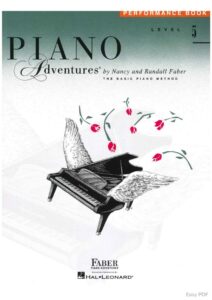 |
|
| Piano Adventures Popular Repertoire Level 1 |
 |
|
| Piano Adventures Popular Repertoire Level 2a |
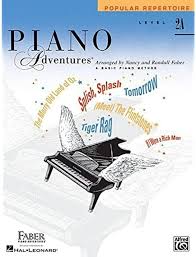 |
|
| Piano Adventures Popular Repertoire Level 2b |
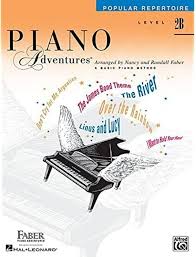 |
|
| Piano Adventures Popular Repertoire Level 3A |
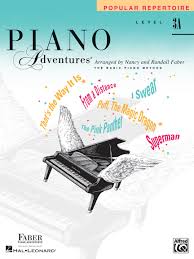 |
|
| Piano Adventures Popular Repertoire Level 3b |
 |
|
| Piano Adventures Popular Repertoire Level 4 |
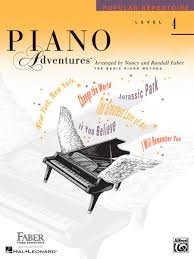 |
|
| Piano Adventures Popular Repertoire Level 5 |
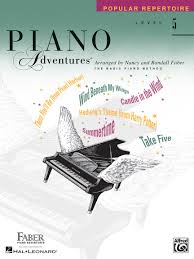 |
|
| Piano An Encyclopedia Edited by Robert Palmieri (2003) |
 |
|
| Piano Anthology (29 all time favourites) by Andrea Cappellari |
 |
Piano Anthology (29 all time favourites) by Andrea Cappellari |
| Piano Anthology The Faber Music Piano Anthology Best loved original repertoire for solo piano |
 |
Piano Anthology The Faber Music Piano Anthology Best loved original repertoire for solo piano |
| Piano Anthology Vol 1 |
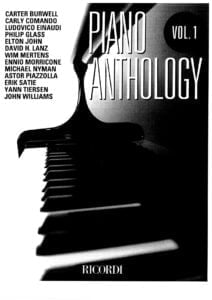 |
Piano Anthology Vol 1 |
| Piano Anthology Volume 2 |
 |
Piano anthology 2 |
| Piano Bar Collection Mini Series |
 |
Piano Bar Collection Mini |
| Piano Bar Favorites (Piano Vocal guitar songbook) |
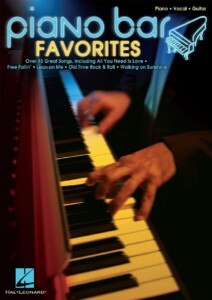 |
Piano Bar Favorites (Piano Vocal guitar songbook) |
| Piano básico de Bastien Nivel 1 al (Spanish-Español) |
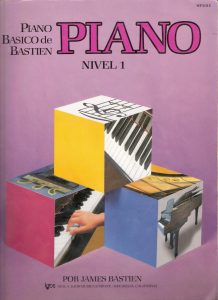 |
|
| Piano Basico De Bastien Piano Elemental A Para El Pequeno Principiante |
 |
|
| Piano Basico de Bastien Piano Elemental A y B Para El Pequeño Principiante (Spanish-Español) |
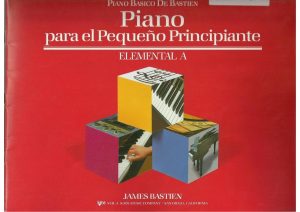 |
|
| Piano Basico De Bastien Piano Elemental B Para El Pequeno Principiante |
 |
|
| Piano Básico Nivel 1 (Bastien) Español (Spanish) |
 |
Piano Básico Nivel 1 (Bastien) Español (Spanish) |
| Piano Básico Nivel 2 (Bastien) Español (Spanish) |
 |
|
| Piano Básico Nivel 3 (Bastien) Español (Spanish) |
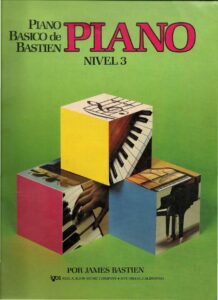 |
|
| Piano Básico Nivel 4 (Bastien) Español (Spanish) |
 |
|
| Piano Boogie René Favre |
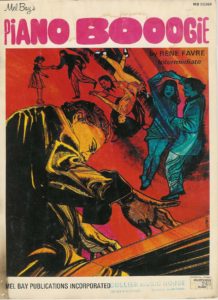 |
|
| Piano Book Pop Movies Hits (Mike Emerson) |
 |
Piano Book Pop Movies Hits Piano Music – Piano Books – Piano Sheet Music – Keyboard Piano Book – Music Piano – Sheet Music… (Mike Emerson) |
| Piano Calm 15 Reflective Solos Composed By Phillip Keveren |
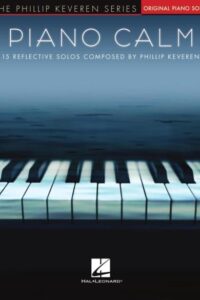 |
Piano Calm 15 Reflective Solos Composed By Phillip Keveren |
| Piano Chord Notation Dictionary |
 |
|
| Piano Chords, Mel Bay Deluxe Encyclopedia Of – A Complete Study Of Chords And How To Use Them |
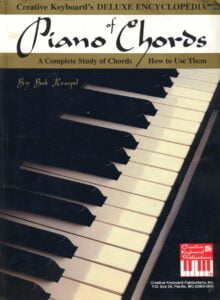 |
Piano Chords, Mel Bay Deluxe Encyclopedia Of – A Complete Study Of Chords And How To Use Them |
| Piano Classical Method Duet Collection 1 Hans Günther Heumann |
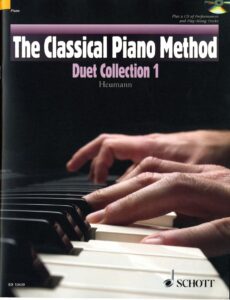 |
Piano Classical Method Duet Collection 1 Hans Günther Heumann |
| Piano Classics The USBORNE – Book of – Over 80 easy pieces to play |
 |
Piano Classics, The USBORNE – Book of – Over 80 easy pieces to play |
| Piano Classics Favorite Pieces from Bach to Satie PDF |
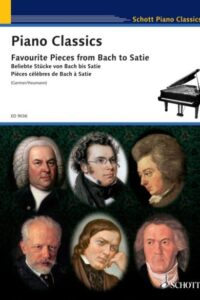 |
Piano Classics Favorite Pieces from Bach to Satie PDF Contents |
| Piano Classics World Masterpieces Piano Sheet Music Book The Most Famous Classical Piano Songs |
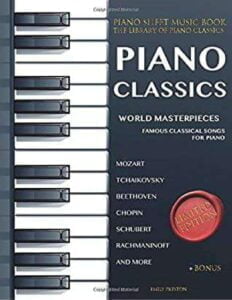 |
Piano Classics World Masterpieces Piano Sheet Music Book The Most Famous Classical Piano Songs Mozar |
| Piano Course Book 1 by Leila Fletcher |
 |
|
| Piano Course For Adult Learning | Piano Course For Adult Learning | |
| Piano Duets For Children |
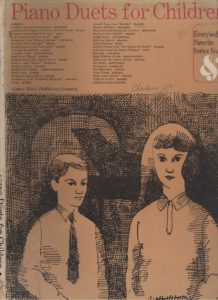 |
Piano Duets For Children |
| Piano Especially for Adults Level 2 Intermediate 11 Piano Solos Adults Alexander Dennis | Piano Especially for Adults Level 2 Intermediate 11 Piano Solos Adults Alexander Dennis | |
| Piano Exercises Books (Bartok-Hanon-Czerny-Pischna, etc.) | Piano Exercices | |
| Piano For Beginners 6th Ed |
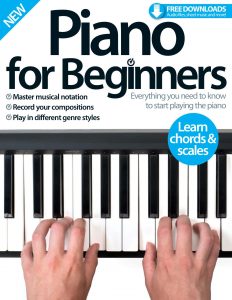 |
Piano For Beginners 6th Ed |
| Piano For Busy Teens Book 1 (early intermediate to intermediate) |
 |
|
| Piano for Dummies, 2nd Edition – Book with AUDIO MP3 | Piano for dummies | |
| Piano Grade 1 Trinity Guilhall Pieces & Exercises for examinations TCL |
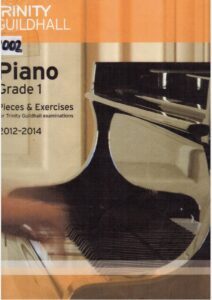 |
|
| Piano Grade 2 Trinity Guilhall Pieces & Exercises for examinations TCL |
 |
|
| Piano Grade 3 Trinity Guilhall Pieces & Exercises for examinations TCL |
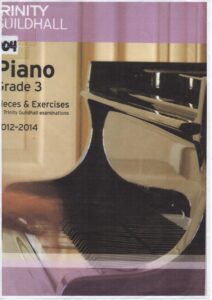 |
|
| Piano Grade 4 Trinity College London Pieces & Exercises for examinations TCL |
 |
|
| Piano Guided Sight-Reading (By Leonhard Deutsch) (1950) |
 |
|
| Piano Heroes 15 songs von Jazz bis Pop Hans Gunter Heumann Piano Heroes |
 |
Piano Heroes 15 songs von Jazz bis Pop Hans Gunter Heumann Piano Heroes |
| Piano Hymns Of Faith Marilyn White |
 |
Piano Hymns Of Faith Marilyn White |
| Piano Improvisation On A George Gershwin Theme (Musescore File).mscz | ||
| Piano Jazz Blues Annick Chartreux Pièces Faciles Pour Piano Livre 1 |
 |
|
| Piano Jazz Blues Annick Chartreux Pieces Faciles Pour Piano Livre 2 |
 |
|
| Piano Jazz Blues Annick Chartreux Pieces Faciles Pour Piano Livre 3 |
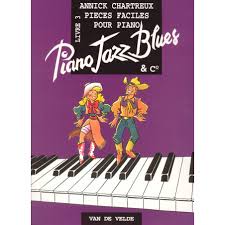 |
|
| Piano Keyboard Lesson Accelerate Your Keyboard Playing In Blues Rock And Funk Berklee Press |
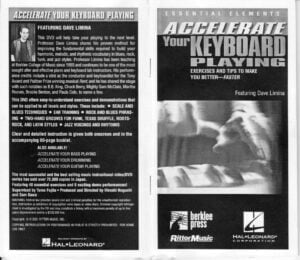 |
|
| Piano Klassiker |
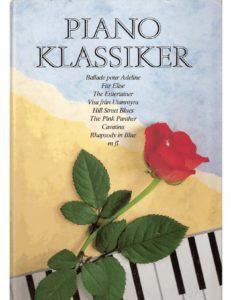 |
Piano Klassiker |
| Piano Klassiker Volume 2 |
 |
Piano Klassiker Volume 2 |
| Piano Lessons – Madame Bovary OST (Evgueni & Sacha Galperine) | ||
| Piano Lessons Book 1 Teacher’s Guide |
 |
|
| Piano Lessons Book 2 Student piano library |
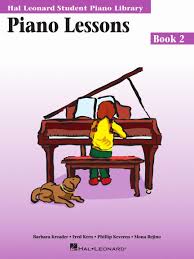 |
|
| Piano Lessons Level One Easy Solo for music lovers by Scott Hiltzik |
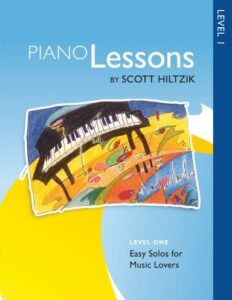 |
|
| Piano Lessons With Claudio Arrau Victoria A. Von Arx (Book) |
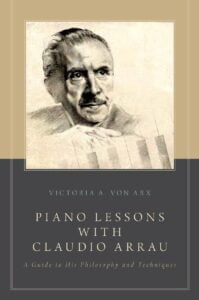 |
|
| Piano Level 1 Etudes Celebration Series (Royal Conservatory RCM) |
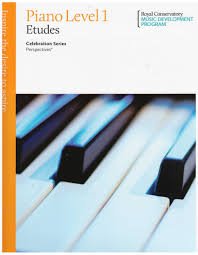 |
|
| Piano light Spirituals & Gospel |
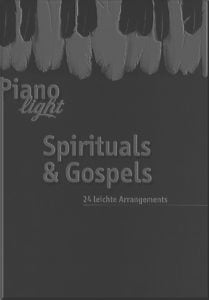 |
Piano light Spirituals & Gospel |
| Piano Literature Book 1 Piano Adventures Atlas Late Elementary The Periods Of Music History |
 |
Piano Literature Book 1 Piano Adventures Atlas Late Elementary The Periods Of Music History |
| Piano Literature Book 2 Piano Adventures Atlas Early Intermediate The Periods Of Music History |
 |
Piano Literature Book 2 Intermediate |
| Piano Literature Book 3 Piano Adventures Atlas Intermediate The Periods Of Music History |
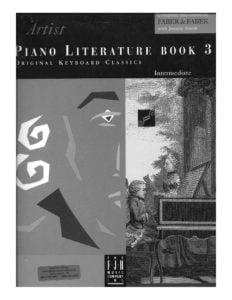 |
Piano Literature Book 3 Intermediate |
| Piano Literature Book 4 Developing Artist Original Keyboard Classics Late Intermediate Piano Adventures |
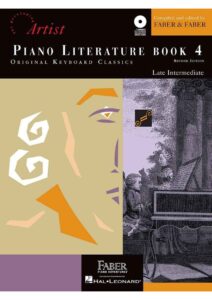 |
Piano Literature Book 4 Developing Artist Original Keyboard Classics Late Intermediate Piano Adventures |
| Piano Literature Volume 1 J S. Bastien |
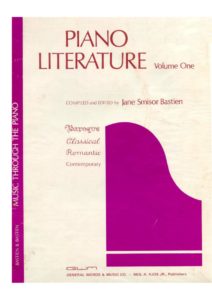 |
Piano Literature Volume 1 J S. Bastien |
| Piano Literature Volume 2 J S. Bastien |
 |
Piano Literature Volume 2 J S. Bastien |
| Piano Man – Billy Joel (Musescore File).mscz | ||
| Piano Masterpieces (Music Book) Text In Russian |
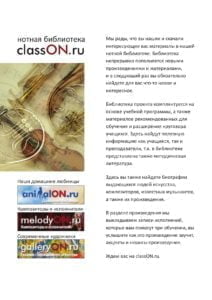 |
|
| Piano Mastery – Talks With Master Pianists And Teachers-Second Series (By Harriette Brower) (1917) |
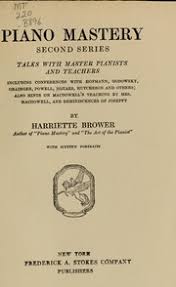 |
|
| Piano Notes The World Of The Pianist Charles Rosen (Book) |
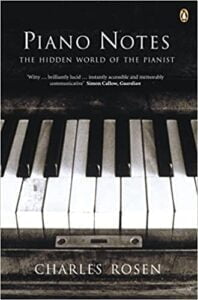 |
|
| Piano para Dummies Blake Neely Español Spanish |
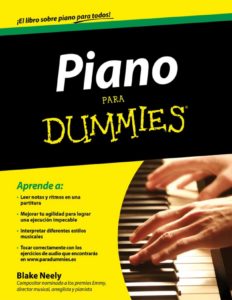 |
|
| Piano Pieces for Children over 100 selections progressively graded by Maxwell Eckstein |
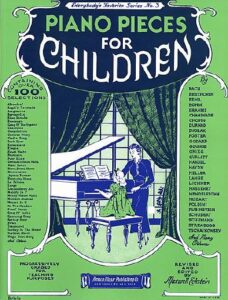 |
Piano Pieces for Children over 100 selections progressively graded by Maxwell Eckstein |
| Piano Playing – With Piano Questions Answered (By Josef Hofmann) (1920) |
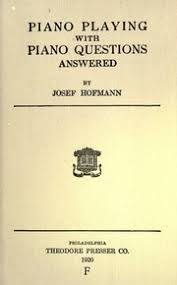 |
|
| PIANO Rare Masterpieces discovered for you by MICHAEL KORSTICK. Seltene Meisterwerke für Sie entdeckt |
 |
PIANO Rare Masterpieces discovered for you by MICHAEL KORSTICK. Seltene Meisterwerke für Sie entdeckt |
| Piano Roles A New History Of The Piano (- Book) 300 years of life with the piano (2002) by Jame Parakilas |
 |
|
| Piano Scales Made Simple The Easy Guide To Playing Piano Scales (Piano Lessons For Beginner To Advanced Levels) (Mantius Cazaubon [Cazaubon, Mantius]) Sheet Music |
 |
Piano Scales Made Simple The Easy Guide To Playing Piano Scales (Piano Lessons For Beginner To Advanced Levels) (Mantius Cazaubon [Cazaubon, Mantius]) Sheet Music |
| Piano Scales, Chords, Arpeggios & Cadences – Alfred’s The Complete Book Of |
 |
|
| Piano Sight Reading Exercises Op. 45 Book III C. Schäfer |
 |
|
| Piano Solos 12 Advanced solos for the modern pianist Vol. 1 |
 |
Piano Solos 12 Advanced solos for the modern pianist Vol. 1 |
| Piano Solos 12 Advanced solos for the modern pianist Vol. 2 |
 |
Piano Solos 12 Advanced solos for the modern pianist Vol. 2 |
| Piano Solos Book 3 |
 |
Piano Solos Book 3 |
| Piano Solos Film Music The Costume Drama Collection (Romantic Themes collection) |
 |
Piano Solos Film Music The Costume Drama Collection (Romantic Themes collection) |
| Piano Solos For Advent, Christmas Epiphany |
 |
Piano Solos For Advent, Christmas Epiphany |
| Piano Sonata Ix In A Major K 300 (331) W. A. Mozart (Incl. Turkish March) (Musescore File).mscz | ||
| Piano Sonata K 545 1st Mov. W.A. Mozart (Musescore File).mscz | ||
| Piano Sonata K 545 2nd Mov. W.A. Mozart (Musescore File).mscz | ||
| Piano Sonata K 545 3rd Mov. W.A. Mozart (Musescore File).mscz | ||
| Piano Sonata No 11 K 331 3rd Movement “rondo Alla Turca” (Musescore File).mscz | ||
| Piano Sonata No. 14 Moonlight 3rd Mov. Arranged For Electric Guitar (Musescore File).mscz | ||
| Piano Sonataop 49 No. 2 (Complete) (Musescore File).mscz | ||
| Piano Sonatinas Book 1 Early Intermediate |
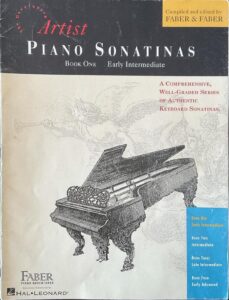 |
Piano Sonatinas Book 1 Early Intermediate |
| Piano Standards Phillip Keveren Series Easy Piano |
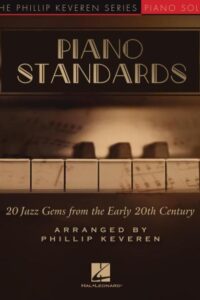 |
Piano Standards Phillip Keveren Series Easy Piano |
| Piano Studies Etudes Level 4 Celebration Series (Perspectives Royal Conservatory RCM) |
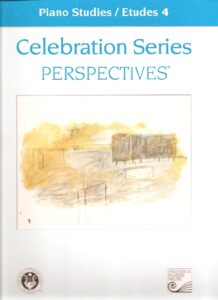 |
Piano Studies Etudes Level 4 Celebration Series (Perspectives Royal Conservatory) |
| Piano Styles Of 23 Pop Masters (Mark Harrison ) Secrets of the great contemporary players |
 |
Piano Styles Of 23 Pop Masters (Mark Harrison ) Secrets of the great contemporary players |
| Piano Summer Pleasures (Easy Pieces for Beginners) Allime Schottische S.P. Snow |
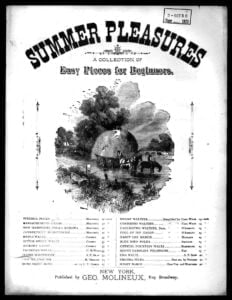 |
|
| Piano Syllabus 2015 edition The Royal Conservatory |
 |
|
| Piano Syllabus (2015) The Royal Conservatory |
 |
Piano Syllabus (2015) The Royal Conservatory |
| Piano Tranquility |
 |
Piano Tranquility – sheet music |
| Piano Travelin Fingers Book 2 |
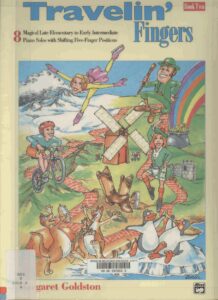 |
Piano Travelin Fingers Book 2 |
| Piano Tuning A Simple and Accurate Method for Amateurs (Book) by J. Cree Fischer |
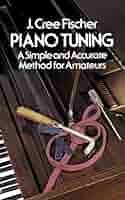 |
|
| Piano Very Easy Collection (piano solo) |
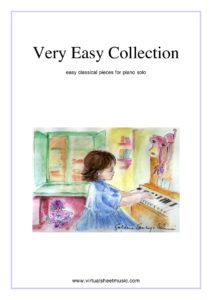 |
|
| Pianoforte Antologia di Successi – Vol.2 by Franco Concina |
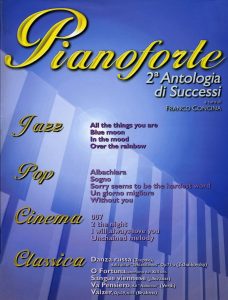 |
Pianoforte Antologia de Successi – Vol.2 |
| Pianoforte Music – Its History, With Biographical Sketches And Critical Estimates Of Its Greatest Masters By John Comfort Fillmore) (1883) |
 |
|
| Picture Chord Encyclopedia Photos Diagrams For Over 2,600 Guitar Chords |
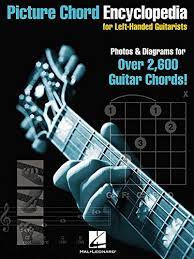 |
Picture Chord Encyclopedia Photos Diagrams For Over 2,600 Guitar Chords |
| Picture Chords The Encyclopedia Of For All Keyboardists Leonard Vogler |
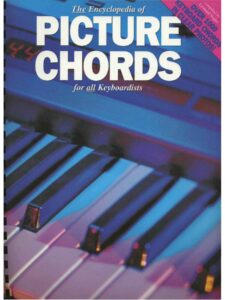 |
|
| Pie Jesu – Andrew Lloyd Webber | Andrew Lloyd Webber – Pie Jesu | |
| Pieczonka, A. – Tarantelle in A minor (sheet music) |
 |
|
| Pierre (Pooh) | ||
| Pierre Bachelet Songbook |
 |
Pierre Bachelet Songbook |
| Pierre Boulez 12 Notations For Piano | Pierre Boulez 12 Notations For Piano | |
| Pin Penin (Il Casanova di Federico Fellini) Nino Rota | ||
| Pink – Get The Party Started | ||
| Pink – God Is A Dj | ||
| Pink Floyd Ultimate Bass Play Along With Audio Mp3 |
 |
Pink Floyd – Ultimate Bass Play-Along |
| Pink Floyd Guitar Signature Licks A Stepbystep Breakdown Of David Gilmours Guitar Styles And Techniques (Pink Floyd [Floyd, Pink]) with TABs |
 |
Pink Floyd Guitar Signature Licks A Stepbystep Breakdown Of David Gilmours Guitar Styles And Techniques (Pink Floyd [Floyd, Pink]) with TABs |
| Pink Floyd – Another Brick In The Wall | ||
| Pink Floyd – Anthology (Piano, vocal, Guitar chords) |
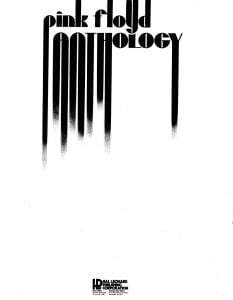 |
pink floyd sheet music |
| Pink Floyd – Comfortably Numb (Easy Piano Solo sheet music) | Pink Floyd – Comfortably Numb (Easy Piano Solo sheet music) | |
| Pink Floyd – Comfortably Numb (Piano) |
 |
|
| Pink Floyd – Comfortably Numb The Inside Story Of Pink Floyd Mark Blake (Book) |
 |
|
| PINK FLOYD – Dark Side Of The Moon Guitar Songbook with Tablature |
 |
PINK FLOYD – Dark Side Of The Moon Guitar Songbook |
| Pink Floyd – Shine On You Crazy Diamond | ||
| Pink Floyd – The division bell (guitar songbook) with Tablature |
 |
Pink Floyd – The division bell (guitar songbook) |
| Pink Floyd – The Great Gig in the Sky (Easy Piano Solo arr.) | Pink Floyd – The Great Gig in the Sky (Easy Piano Solo arr.) | |
| Pink Floyd – The Great Gig In The Sky (Piano Solo Arr.) (Musescore File).mscz | ||
| Pink Floyd – The Wall (Guitar Tab) |
 |
Pink Floyd – The Wall (Guitar Tab) |
| Pink Floyd – The Wall (Piano) |
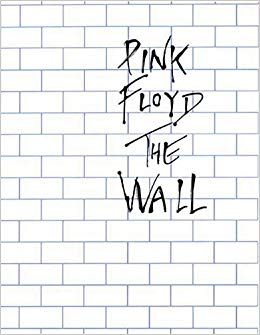 |
|
| Pink Floyd – Time Piano Solo |
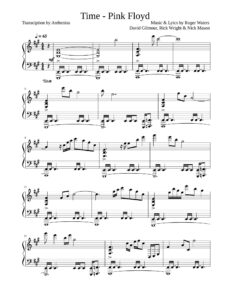 |
|
| Pink Floyd – Ultimate Keyboard Play-Along with MP3 audio tracks |
 |
Pink Floyd – Ultimate Keyboard Play-Along |
| Pink Floyd – Wish You Were Here Guitar Arr. (Musescore File).mscz | ||
| Pink Floyd – Wish You Were Here Guitar Arr. With Tabs |
 |
|
| Pink Floyd – Wish You Were Here Guitar Arr. With Tabs (Musescore File).mscz | ||
| Pink Floyd (The Dark Side Of The Moon) Guitar Rock Play Along Vol. 68 (PDF + MP3 audio tracks) with Tablature |
 |
Guitar Play-Along Volume 68 – Pink Floyd Pink_Floyd_Dark_Side_Of_The_Moon |
| Pink Floyd Acoustic Guitar Collection with Tablature |
 |
|
| Pink Floyd Album By Album (Popoff, Martin) Book |
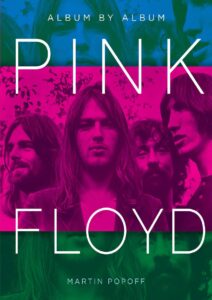 |
|
| Pink Floyd All the Songs The Story Behind by Guesdon, Jean-Michel Margotin, Philippe (Book) |
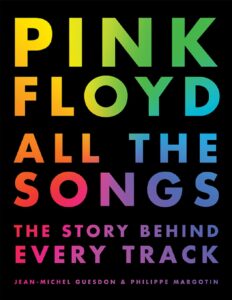 |
|
| Pink Floyd Animals Piano Vocal Chords Songbook |
 |
Pink Floyd Animals Piano Vocal Chords Songbook |
| Pink Floyd Back Stage A Momentary Lapse Of Reason (BOOK) Biography |
 |
|
| Pink Floyd Classics (Pink Floyd) Guitar TABs Play Along with MP3 audio tracks download |
 |
Pink Floyd Classics (Pink Floyd) Guitar TABs Play Along with MP3 audio tracks download |
| Pink Floyd Early Classics – Guitar Signature Licks with MP3 audio Play Along with Tablature |
 |
Pink Floyd Early Classics – Guitar Signature Licks with MP3 audio Play Along |
| Pink Floyd Guitar Chord Songbook Floyd Pink Sheet Music 30 songs |
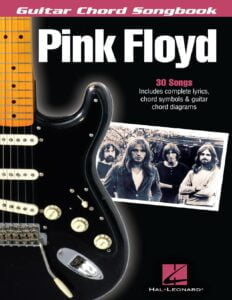 |
Pink Floyd Guitar Chord Songbook Floyd Pink Sheet Music |
| Pink Floyd Guitar Tab |
 |
Pink Floyd Guitar Tab |
| PINK FLOYD Pigs Might Fly The Inside Story Of Pink Floyd By Mark Blake (Book) |
 |
|
| Pink Floyd Songbook – Pink Floyd (Easy Guitar with Riffs and Solos) with Tablature |
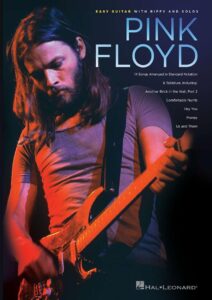 |
Pink Floyd Songbook – Pink Floyd (Easy Guitar with Riffs and Solos) |
| Pink Floyd The Final Cut Songbook |
 |
|
| Pink Floyd The Great Gig in the Sky | Pink Floyd The Great Gig in the Sky | |
| Pink Floyd Wish You Were Here (piano vocal songbook) |
 |
Pink Floyd Wish You Where Here |
| Pink Greatest Hits So Far Piano Vocal Guitar |
 |
Pink Greatest Hits So Far Piano Vocal Guitar |
